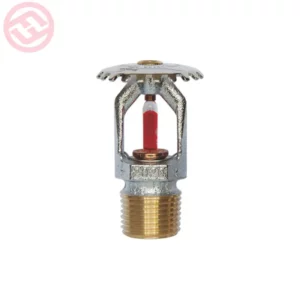Fire sprinkler systems can be customized to meet the specific needs and requirements of different buildings, environments, and fire protection standards.
Some common customization options available for fire sprinkler systems include:
- Sprinkler Types: There are various types of sprinklers available, each designed for specific applications. Options include upright, pendant, sidewall, concealed, and recessed sprinklers. Different types may be chosen based on ceiling height, aesthetic preferences, and coverage requirements.
- Temperature Rating: Sprinklers are available with different temperature ratings to activate at specific temperatures. Common temperature ratings include 135°F (57°C), 155°F (68°C), and 175°F (79°C). The selection of temperature ratings depends on the ambient temperature and potential fire hazards in the area.
- Coverage Area: Sprinkler heads can be selected based on their coverage area and flow rate. Different sprinkler patterns, such as standard coverage, extended coverage, or specific hazard coverage, are available to provide optimal protection for different spaces and occupancy types.
- Finish and Color: Sprinkler heads can be customized with various finishes and colors to blend in with the architectural aesthetics of the building. Options may include chrome, brass, white, black, or custom colors to match the ceiling or décor.
- Water Flow and Pressure Requirements: Fire sprinkler systems can be designed to meet specific water flow and pressure requirements based on the size of the protected area, occupancy type, and local fire codes. Fire Sprinkler Flow tests and hydraulic calculations are conducted to determine the optimal design parameters.
- Corrosion Resistance: In corrosive environments or areas with high humidity, corrosion-resistant sprinkler heads made of materials such as stainless steel or corrosion-resistant coatings can be used to extend the lifespan of the system and ensure reliability.
- Freeze Protection: In cold climates, freeze-resistant sprinkler heads with insulated enclosures or dry pipe systems may be installed to prevent freezing and ensure the system’s effectiveness during freezing temperatures.
- Special Hazard Protection: Specialized sprinkler heads are available for protecting areas with unique fire hazards, such as high-temperature environments, flammable liquids, electrical equipment, or hazardous materials. These sprinklers are designed to provide effective fire suppression while minimizing damage to the protected assets.
- Remote Monitoring and Control: Advanced fire sprinkler systems can be equipped with remote monitoring and control capabilities, allowing building owners and authorities to monitor system status, receive alerts, and remotely control sprinkler operation for improved safety and maintenance.
- Integration with Building Systems: Fire sprinkler systems can be integrated with other building systems, such as fire alarm systems, HVAC systems, and building automation systems, to provide coordinated emergency response and enhanced building safety.
Overall, customization options for fire sprinkler systems allow for the design of tailored solutions that meet specific fire protection needs, regulatory requirements, and architectural preferences for different buildings and applications. Collaboration with experienced fire protection engineers and contractors is essential to ensure the effective design, installation, and maintenance of customized fire sprinkler systems.
